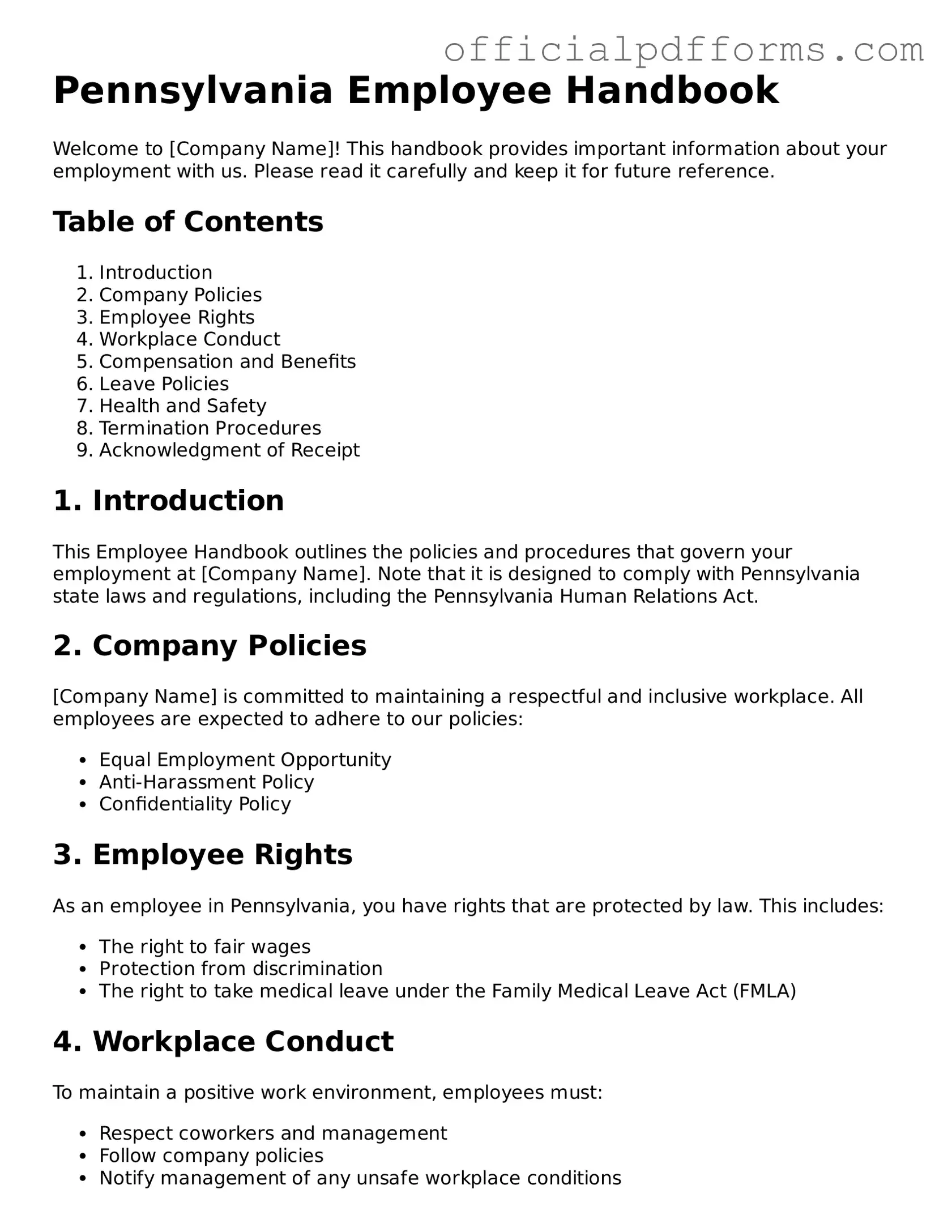The Pennsylvania Employee Handbook form is a document designed to outline the policies, procedures, and expectations for employees within a company operating in Pennsylvania. It serves as a guide for both employers and employees, ensuring clarity on various workplace matters.
Why is it important to have an Employee Handbook?
An Employee Handbook is crucial for several reasons:
-
It sets clear expectations for employee behavior and performance.
-
It helps to protect the company legally by documenting policies.
-
It fosters a positive work environment by promoting transparency.
-
It provides employees with essential information about their rights and responsibilities.
What should be included in the Employee Handbook?
Key components of an Employee Handbook typically include:
-
Company mission and values
-
Employment policies (e.g., hiring, termination)
-
Workplace conduct and behavior expectations
-
Compensation and benefits information
-
Leave policies (sick leave, vacation, etc.)
-
Health and safety guidelines
-
Disciplinary procedures
How often should the Employee Handbook be updated?
Regular updates are essential to keep the Employee Handbook relevant. It is advisable to review the handbook at least annually or whenever there are significant changes in laws, regulations, or company policies. This ensures that employees are always informed of the latest guidelines.
Who is responsible for distributing the Employee Handbook?
The responsibility for distributing the Employee Handbook typically falls on the human resources department. It is important that all new employees receive a copy during their onboarding process. Additionally, existing employees should be notified of any updates or revisions.
What should employees do if they have questions about the Employee Handbook?
Employees should feel encouraged to ask questions if they have any uncertainties regarding the Employee Handbook. They can reach out to their supervisor or the human resources department for clarification. Open communication is vital for understanding and compliance.
Can the Employee Handbook be used in legal disputes?
Yes, the Employee Handbook can serve as an important document in legal disputes. It may be referenced to clarify company policies and procedures. However, it is crucial that the handbook is well-drafted and up-to-date to effectively support the company’s position in any legal matters.
